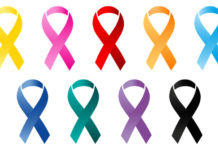 If you have made up your mind to enter an inpatient rehabilitation facility and it will be your first time there, you don’t know what you are going to be in for. No wonder some people find it disconcerting and even scary, not realizing how their life will be shaped once they’ve checked in. It’s natural that people want to understand what they’re in for.
If you have made up your mind to enter an inpatient rehabilitation facility and it will be your first time there, you don’t know what you are going to be in for. No wonder some people find it disconcerting and even scary, not realizing how their life will be shaped once they’ve checked in. It’s natural that people want to understand what they’re in for.
Yes, you’re entitled to it. But it’s only proper to start with some basic knowledge. Remind yourself that it’s good to be still alive – some people with your problem no longer are! The statistics of the United States Centers for Disease Control reveal that the year 2009 counts over 17,000 deaths caused by drug abuse, it comes to more than 100 in one day, and you’re not among them, that’s great. Then, you will be treated – and again, that is more than droves of people get. Two years ago a survey conducted by the Substance Abuse and Mental Health Services Administration showed startling results: of 24 and more million people registered as substance abusers only 2.5 million were getting a rehab.
First and foremost, addiction is a disease – a fact that must be clearly understood. No amount of willpower and good intentions can get the afflicted person back on the track, it is the mind that must be treated and it should be done by rehab professionals. Then, addiction doesn’t necessarily mean only alcohol and drugs are involved: people check in facilities to cope with issues related to eating, sex, gambling, and other potentially problematic spheres.
Watch the Intervention TV show to learn about all the problems addiction brings about and the difficulty of holding it in check even after enlisting professional help. Actually, the idea of admitting your condition and checking in an inpatient facility may be the perfect solution to the problem. But there are things about rehab you should know so as to make the treatment process run as smooth as it can.
It is an issue you must address
No matter what you tell yourself, undergoing rehab surely means you’ve got a problem. You may have gone there on your own volition, been sent by a judge or by your relatives – anyway, it happened because there is a real problem which you are going to face. Think how many people – even in the place where you live – take drugs, drink alcohol to excess, gamble unreservedly, lead unhealthy sexual life, have bad diets, and go on aggravating their condition without getting any treatment. You are in a better position, and now you’ve admitted to yourself that you have a problem to solve, it will help you adapt to the life in a facility much easier.
Treatment costs much money
Now let’s admit, you spent wads of currency on your addiction, it stands to reason you’re going to spend more to shake it off. It’s a bit easier for the well-off who can check in a holistic facility which provides massages, meals cooked by a personal chef and other amenities. It can run up to $2,000 and more per day, and you will be asked to pay in cash mostly. For those who are less happily endowed, insurance will help to cover a percentage of expenditure. You can find a facility that charges about $350 for a day. Take the trouble to investigate your financial position so that your treatment won’t terminate before it’s due to because of lack of funds. Find out how much and for how long you can rely on your insurance.
Forget all your preconceived ideas about how it will be
Somehow you must have gotten an idea what the facility will be like inside. It may have sprung from reading books like A Million Little Pieces or watching movies like 28 Days featuring Sandra Bullock. You may picture a facility with patients all a-shake from withdrawals, acting violently until they get straitjackets put on them or sitting in the lotus posture with fingers intertwined deep in meditation. It’s true, there are places like this, but it won’t be the ones you are going to enter. Although you can get an idea of what kind of treatment you are in for, it doesn’t mean you can get a pre-notion of how it is going to be no more you can predict an interior design of a restaurant you’re going to for the first time. Get rid of false notions and wait until you see what it will be like.
There’ll be a company with established social roles
Like everywhere else, rehab patients fall into three categories: newbies, those who know their way around and those who will be leaving soon. These categories keep revolving with time; what’s more, all of them contain the usual set of characters you can come across in every group: the clown, the dominant person, the clever guy, the go-to-hell type, anything you can think of. If you thought the place where addicts end up would be much different from your school, think again. You’ll have to go all the way from freshman to old hand once again.
House arrest describes best what you’re in for
The main thing is, when you’re leading your habitual life, you can’t keep your addiction in check. So, if you want to get down to coping with your inner demons seriously, it’s far better to do it having stepped outside of your life routine. While there are strict rehabs and ones which allow you certain latitude, the common rule is you come inside and stay inside. Take it as a kind of house arrest that you can’t break if you don’t want complications. There is time to wake up, time to have meals, time for everything else, and it’s up to you to adapt to the set routine. Everything is aligned into rigid succession. The point is that addiction knows no schedule, so having to keep to a structured life is a strong drive towards normalcy. While you may be feeling like you were in prison, and there are punishments for stepping out of routine, take it as a necessary measure.
Treatment takes time
There do exist 28-program facilities – there are even ones which offer shorter period treatment – do not take it for granted that you are going to be absent for a month. Let’s say the duration of your stay in a rehab facility is unpredictable. It is especially important if you want to receive a clearance certificate. There may be bodies which need proof that you are done with it, like judges, medical (or governmental) licensing boards, employers, or anyone to whom it may concern that your treatment has been successfully completed. The proof won’t be forthcoming until the doctor is sure you’re cured – and if they think you need more time, you will have to stay on for two, three months, maybe even longer. There’s no way you can count on leaving at a given date.
Get ready to bend to the rules
If you’re thinking inpatient rehab facilities are run along the lines of a hospital, forget it. Hospital means service, rehab facilities rule you rather than serve you, and they do it for money. Healthcare and commerce reign hand in hand, and you aren’t going to have a say – far less a sway – in this. If you think you can rebel against it and make a dent in their armor, you just can’t be more wrong. It is definitely not the place where the customer is always right, and you can tell them you’re quitting and splash all over your Facebook page how irate you are with the place – people outside understand you’re an addict on cure as well. Rebelling won’t get you anywhere, but if you lump it and accept what is coming to you, you may find yourself reinvented.
Present addicts are serviced by former addicts
In other medical centers you are serviced by professionals who have never been in your place and have never developed your ailments, which is implicitly understood. But inside inpatient rehab facilities many of the staff used to be the place’s former patients who completed the treatment and stayed on as members of the staff. It isn’t different from any other institution in terms of there being low-hierarchy employees, management responsible for keeping up the functioning and top managers who never come down to you. Kitchen workers and facility fixers are not likely to draw high salaries; where do facilities get their labor? Among those who know the place and feel cozy there – namely, former addicts who are happy to remain on the premises out of the outside world with its temptations. Cured addicts also make good case managers, because they know what it’s all about and set an example to those who may not believe in successful cures. If you come to think of it, the basic idea is sound enough.
The world outside is shut out
Yes, inpatient rehab facilities have similar features to prisons – like the mentality dividing everything into categories “here and out there.” In most cases you won’t be getting many visitors from the world outside no matter how close they are to you. They did not influence you in a bad way, but all the same, you have no urgent need to see them right now, so you won’t. You may be allowed some time to speak on the phone, but you are not likely to get much of that, just several minutes. There are understandable limits on visitation, in some cases rather strict ones, so you would do well to realize that you will be cut off from the world at large – all for your own good.
Understand that you may be tempted there
It goes without saying that the people who run the facility will do their best to keep the place free of everything tempting you to indulge in what you’re addicted to, it can’t be perfectly temptation-tight. Some inmates are hell bent to get what they long for, and they will be holding out the temptation to you. It is a fine reflection of what you are going to face when you leave the facility – no problem to get drugs and alcohol, sex and gambling incitements, people who will go out of their way to involve you back in negative behaviors. While within facilities it is to some extent manageable, it doesn’t mean you won’t be subjected to familiar temptations. Consider it a good chance to put your resolution to test.
There will be bonding with some other patients
The majority of inmates are here because of alcohol and substance problems, other facilities may treat sexual addicts, compulsory eaters, people with other health issues. They will generally fall into the age range of 18 and up – no limits are set for adult inpatients. There will be all sorts, all professions, people hailing from many places even outside the country. They will be strongly joined by having the same problem and having to deal with it in the same set of circumstances. Social differences may be predominating in the outside world, but in there people are intent on seeking bonds and support from others just like they. Don’t underestimate what is happening socially within the facility. It doesn’t end there; you may find you will go on needing the understanding and support you got when you find yourself outside the institution.
Nicotine and caffeine are regulated – learn the rules
With most people smoking and getting coffee (or other energy drinks) into the system is a matter of deep-rooted habit. The management in some facilities believes that inpatients can go in for these stimulants safely because they can help them get over the difficult phase of withdrawal from the stuff that presents real danger to them; other specialists hold that, being drugs, cigarettes and coffee should be expelled from the process of treatment. If you are not dependent on nicotine and caffeine, well and good; but for those whose lifestyle has long included smoking and coffee-taking, the withdrawal from these can be as painful as the other thing. Maybe you need these finer points checked before you enter, for it may prove an important point for your well-being. Or it will probably be a good reason to give up smoking as well as your other habits that are totally unworthy of you. Anyway, it’s a point best cleared up beforehand.
12 steps are a basic principle you have to embrace
Some programs are different, but chances are you’ll be asked to come to terms with the commonly employed 12-step program. It originates from Alcoholics Anonymous, a scheme that has been operative for more than 80 years. The program is based on the notion of a supreme being which is known as a “God of our understanding.” While you may not be a believer in the first place, you’ll have to let it sink in that it is a program that works. It has received a statistically-proven predominance over other techniques. So be ready to participate in a 12-step rehab program which usually implies attending 90 meetings in 90 days following your release from the facility.
You may be unwilling to leave
It may seem strange, but that’s how it happens: you grow to accept the limitations that you were subjected to. You begin with execrating the rules that bind you – but, realize it or not, you begin to get used to the circumstances, and after a while you feel content to go along with the lifestyle you are chained to. All through your stay you believed you resented the routine imposed on you – but once the time you have to leave comes, you realize the support you received and the people who shaped your life there seem indispensable. It is not so, of course, and you will re-adapt to the world you had left, but at first it will be so difficult that many facilities arrange for an easy way to help you install yourself back into your previous lifestyle that seems so unfamiliar now.
Don’t be sure of success but keep hoping
Are you going to rehab for the first time? Do you think you are sure to come out totally cured? This preconceived notion will be broken as soon as you are in and you come to realize that some people are here for the umpteenth time. They are wise to get back in, but it goes to show that the first attempt does not hold out any guarantee. Statistics have it that the first rehab treatment succeeds in from 5 to 20% of cases. If you fail to get into the number of the lucky ones, know that the demon I strong and it will take some more effort to get it out of your system. It will give in eventually, so keep trying and understand you will win – only you don’t know when.






